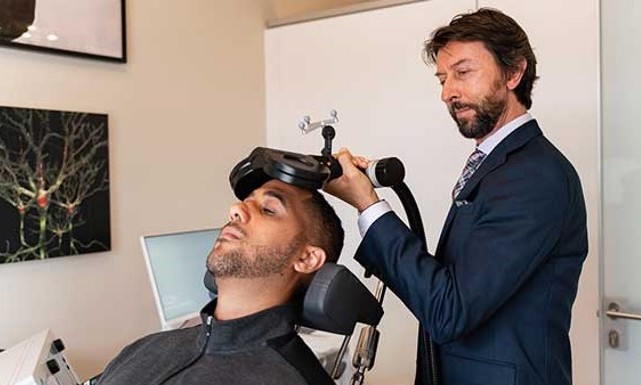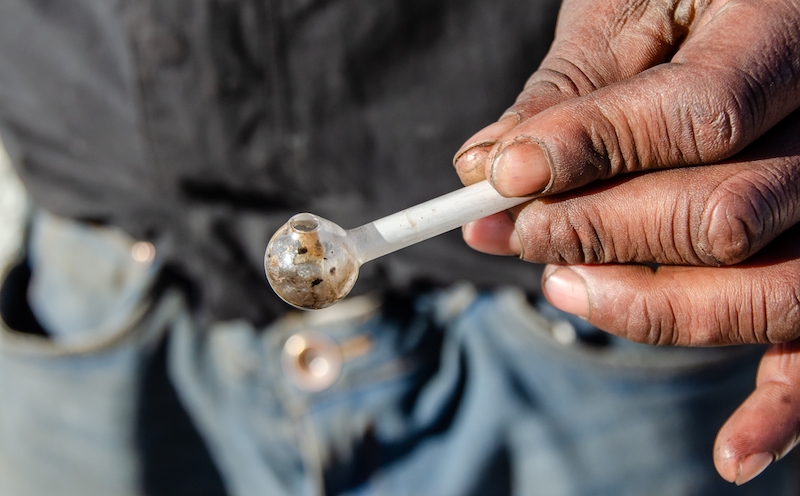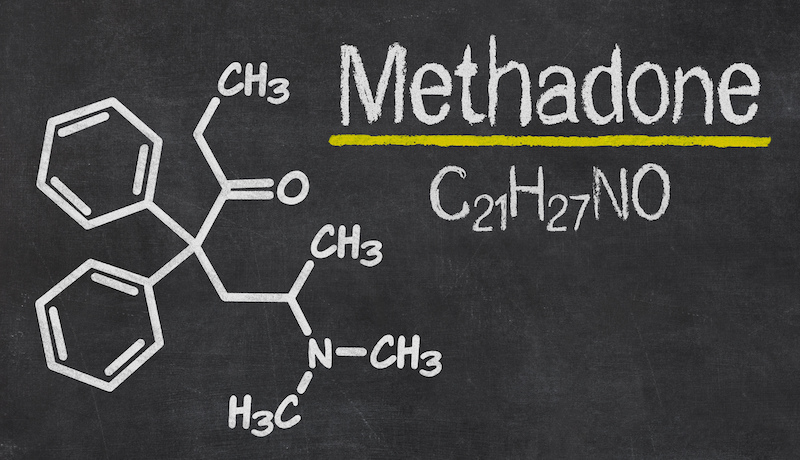When combined with TMS therapy, the technology has been shown to ease the withdrawal process considerably
By Jenny Diedrich
Two technologies starting to be more widely used in addiction treatment are showing great promise in quelling opioid use disorder (OUD).
When used together, the Bridge Device and transcranial magnetic stimulation (TMS), a noninvasive therapy targeting the brain, serve as a one-two punch for patients entering treatment for opioid addiction, according to Antonello Bonci, MD, president and founder of GIA Miami and Vita Recovery. Bonci is a pioneer in the study and use of TMS for addiction and mental health treatment.
The Bridge Device—a small electronic device worn behind the ear that was authorized by the Food and Drug Administration (FDA) in 2017 and is available by prescription—delivers a slight electrical current to the brain that blocks the transmission of pain signals. The device has been shown to relieve the symptoms of acute withdrawal from opioids.

Bonci says one of the main reasons for relapse is excruciating withdrawal symptoms patients experience when they stop using opioids. Withdrawal symptoms can include gastrointestinal distress, nausea, an elevated heart rate, vomiting, sweating, restlessness, anxiety, and pain in the joints and muscles.
“These symptoms are important not only because the patients feel terrible but because in order to stop these symptoms many seek more opioids. Unfortunately, opioid withdrawal is a very delicate time for many patients. It keeps feeding the circle on and on,” says Bonci, who, among other high-profile posts, previously served as scientific director of the National Institute on Drug Abuse (NIDA). “It’s crucial through medications, therapy and this device—whatever works for the patient—to try to minimize these symptoms. Everything we can do for these patients is welcome.”
Bonci says research consistently shows that most people report a reduction of withdrawal symptoms within 60 minutes of the Bridge Device being turned on, which he calls remarkable success.
The Bridge Device Combined With TMS
After the Bridge Device is used to relieve initial withdrawal symptoms, TMS therapy can be administered in the next phase of recovery. In this phase, patients typically experience powerful cravings and obsessive thoughts about using opioids.
“Even when [people] are not in this acute withdrawal from opioids, they can still be triggered to relapse by seeing a needle or somebody taking a pill. They are not safe in terms of not being at risk for relapse. This is why addictions are so terrible. Even months or years later, people can relapse just by seeing an image,” says Bonci.
He explains that addictions change the functioning of the brain’s frontal cortex, which controls decision-making. TMS brain stimulation returns the frontal cortex to what it was before the addiction.
“When we combine taming the acute withdrawal symptoms with brain stimulation such as TMS that can now control thoughts that have to do with craving, we have a winning combination.”
—Antonello Bonci
“Patients say, ‘Since I did TMS, I don’t think about opioids or cocaine or alcohol anymore. Now I feel that I can make my own decisions, and it’s not my addiction making decisions for me.’ When we combine taming the acute withdrawal symptoms with brain stimulation such as TMS that can now control thoughts that have to do with craving, we have a winning combination,” Bonci says.
Bonci wants to send a message of hope to patients suffering from addiction as well as other neurological and psychiatric conditions. He expects the Bridge Device to become more widely available in treatment and believes its use should be covered by insurance companies.
“Science has made tremendous progress in the last few years,” he says. “There are many new therapies based on brain stimulation that I think will change millions of lives as soon as people have access to them through insurance.”












